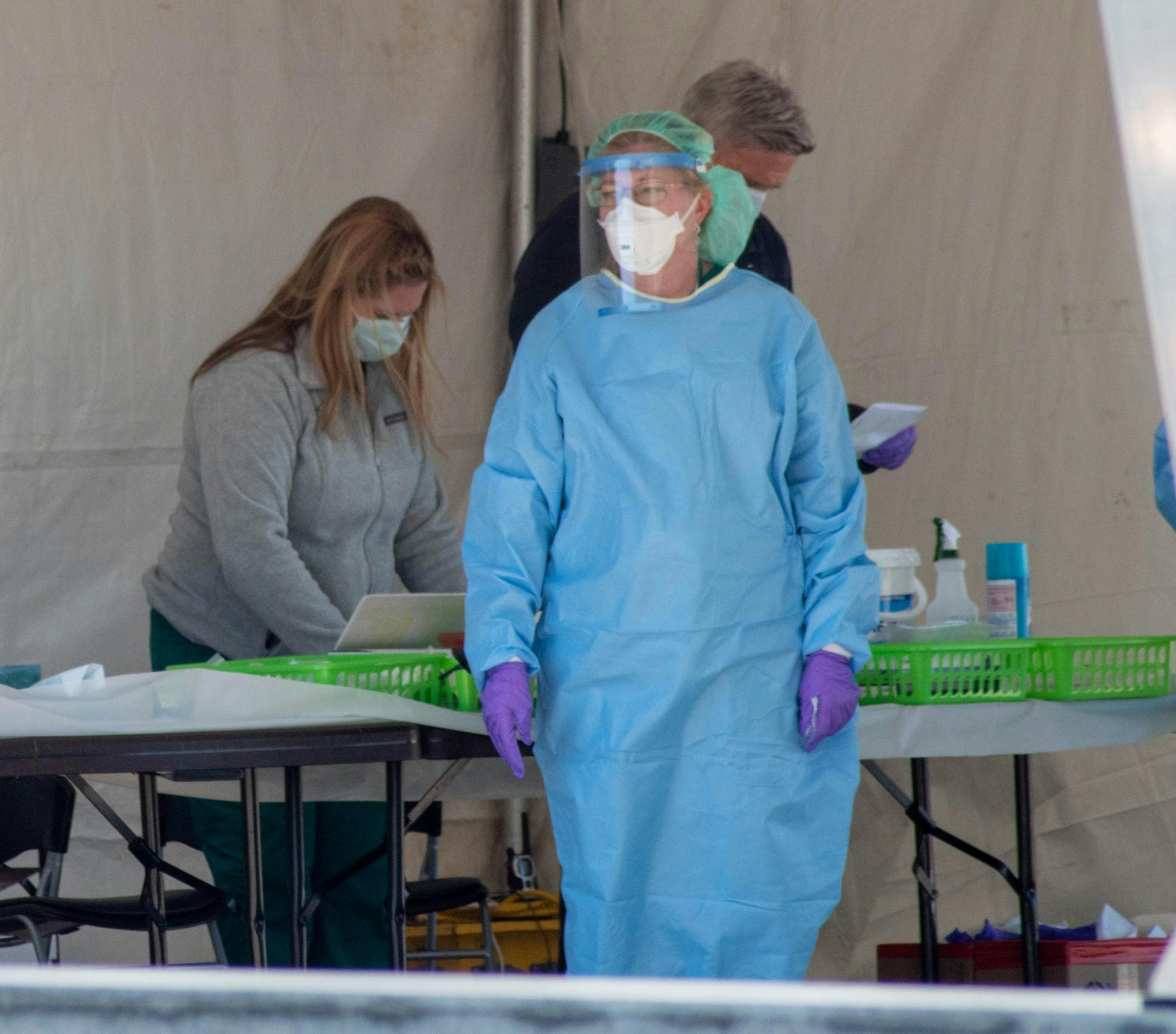Michigan State University has invested in new virtual reality learning technology to help improve health care education for students and faculty in the College of Osteopathic Medicine, College of Veterinary Medicine, College of Nursing and College of Human Medicine.
The Sectra Table is a virtual reality, anatomy table that’s intended to help students visualize different structures of human and animal bodies to improve their understanding of how these structures work.
“It is a simulation tool,” Director of the Learning and Assessment Center Mary Kay Smith said. “So, it provides the opportunity to bring the classroom learning to life and bridges the gap between the classroom and real patient care. Students can use the table, which is the size of a full human. It also has animals, so different canine and feline cases in it as well. They’re able to then take what they learned from the classroom and then they can apply it, using the table that provides a 3D perspective for them."
Allowing students to see basic and complex structures in 3D prepares them to take what they learn in a classroom setting into a clinical setting, Smith said. This improves student’s confidence, which enhances patient safety.
“It bridges that gap between the classroom instruction — which is important — and the clinical setting, where the students are caring for real patients,” Smith said. “This provides an opportunity in between those two points where they can practice, develop critical thinking skills and apply the knowledge that they learned in the classroom without being afraid of taking care of a real patient. It improves their confidence. ... When students are using this type of technology, they’re able to see things in a different way than they will with a patient in the future, so, therefore, will be better prepared to take care of those patients.”
The Sectra Table cost $75,000 and was paid for using university funds. Smith said she and her team planned to purchase the table a decade ago, but it was much more expensive and has less technological capabilities.
Currently, MSU has only purchased one Sectra Table. However, Associate Professor in the Department of Radiology of Osteopathic Medicine Tony Her said if the tables integrate well into the smaller classrooms, he plans to ask to purchase more.
“Right now, we are in the early stage of just playing with it,” Her said. “If they are beneficial, probably the plan is to get more Sectra Tables to fully integrate it. As far as right now, a few courses are planning to fully integrate it into use. I’m also the course director for the (Physician’s Assistant) school that’s opening next year. ... Because the class size for the PA school is much smaller — I believe it’s anywhere from 30 to 40 students — we can fully integrate such a table as part of the curriculum.”
The Sectra Table can be used in person and online, which helped with the transition to online courses following the first confirmed cases of COVID-19 in Michigan in early March, Smith said.
“When we invested in this table, ... our primary goal was the face-to-face use,” Smith said. “But yet, when we had to leave campus due to (COVID-19) situation and the transition of teaching, learning and assessment transitioned from face-to-face to an online environment, this table added more value to us than what we originally intended. The faculty are now able to use the teaching portals that were part of the purchase when we acquired the table. ... It enhanced the online teaching of students.”
Her said he believes the technology will take a few years to fully integrate into all healthcare classrooms due to the COVID-19 pandemic. Her and other faculty plan to assess the functionality and usefulness of the table in the smaller classes at the end of the academic year and decide whether to buy more tables for bigger courses and the off-site Osteopathic Medicine and Human Medicine locations.
The main goal is to work toward buying a Sectra Table that most students on campus would have access to, even if they’re outside of the health care colleges.
“It’s not just for health care students,” Her said. “Anybody who is studying and who is interested in learning more about the human body or is taking classes in anthropology or anatomical science, they all can take full advantage of it as well. It’s not limited to health care students, but any other students who are interested and just have the slightest interests ... can come and use the Sectra Table and take advantage of it.”
Support student media!
Please consider donating to The State News and help fund the future of journalism.
Discussion
Share and discuss “MSU health care colleges invest in visualization table to improve clinical learning” on social media.








